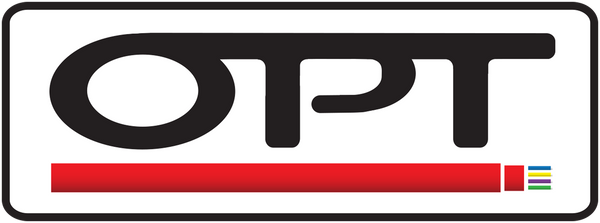Fibre optic technology uses a lot of technical jargon and terminology, here we try and explain some of the commonly used technical terms:
Absorption - the absorbing of light energy within an optical fibre due to natural impurities in the glass. Absorption and scattering are the main cause of attenuation (signal loss) in an optical fibre.
Attenuation - the loss of signal strength (optical power) during transmission between two points. Attenuation expresses the total loss of an optical system, measured in decibels per kilometre (dB/km).
Bandwidth - the information-carrying capacity of an optical fibre. Bandwidth is measured as the amount of data that can be transferred from one point to another within a network in a specific amount of time. Typically, bandwidth is expressed as a bitrate and measured in bits per second (bps).
Buffer - the protective layer that surrounds the fibre cladding.
Cable assembly - an optical fibre cable that has connectors installed on one or both ends.
Cladding - the material surrounding the core of an optical fibre. The cladding has a lower refractive index to keep the light in the core. The cladding and core make up an optical waveguide.
Connector - A mechanical device used on a fibre optic cable to provide a means for aligning, attaching, and decoupling the fibre to a transmitter, receiver, or another cable.
Core - the central region of an optical fibre through which light is transmitted. It has a higher refractive index than the surrounding cladding.
Coupler - a device that combines two or more fibre inputs into one fibre output or divides one fibre input into two or more fibre outputs.
Decibel - a unit of measure used to express the relative strength of a signal. Has a logarithmic scale.
Diffraction - the bending of light rays as they pass around corners or through holes smaller than their own wavelengths.
Dispersion - the spreading or broadening of light pulses as they travel through a fibre.
Enclosure - a cabinet used to organise and enclose cable terminations and splices for use within telecommunication facilities.
Fibre - a thin filament of glass or plastic consisting of a core (inner region) and a cladding (outer region) and a protective coating.
Extrinsic loss - the loss that is induced in an optical transmission system by an external source.
Insertion loss - the amount of light that leaks out or is otherwise lost after being inserted into a fibre either from a light source or another fibre.
Intrinsic loss - the loss due to inherent traits within the fibre; for example, absorption and splice loss.
Laser diode - a laser made of semiconductor materials widely used to transmit light into optical fibres.
Micron (µm) - one micrometre, or one millionth of a metre. Used to express the geometric dimension of fibres.
Multimode - an optical fibre in which light travels in multiple modes. Multimode fibre is used in shorter-distance applications than single-mode fibre.
Multiplex - combining two or more signals into a single bit stream that can be individually recovered.
Nanometre (nm) - one-thousandth of a micrometre, or one-billionth of a metre.
Optical amplifier - a device that boosts signals in an optical fibre.
Optical network - a network that processes and switches signals in optical form.
Optical waveguide - an optical fibre structure that guides light along its length.
Photo diode - a device that receives optical power and changes it to electrical power.
Photon - a particle of light.
Polarisation - the alignment of the perpendicular electrical and magnetic fields that make up a light wave.
Receiver (RX) - an optoelectronic device that converts optical signals into electrical signals.
Reflection - the process that occurs when a light ray traveling in one material hits a different material and reflects into the original material without loss of light.
Refraction - the bending of light rays as they pass through a transmission medium of one refractive index into a medium with a different refractive index.
Repeater - a transceiver that converts optical signals to electronic and back out to optical.
Scattering - a property of glass that causes light to deflect from the fibre and contribute to losses.
Single-mode - an optical fibre in which the signal travels in one mode (path).
Splice - a method for joining two optical fibre ends. Fusion splicing and mechanical splicing are the two types.
Splitter - a device that takes the light from one fibre and injects it into the cores of several other fibres.
Transmitter (TX) - an optoelectronic device that converts an electrical signal to an optical signal. Usually, a LED or laser diode.
Wavelength (λ) - The length of a wave measured from any point on one wave to the corresponding point on the next. The wavelengths of light used in optical fibre are measured in nanometres.
Waveguide - a structure that guides waves, with minimal loss of energy by restricting the transmission of energy to one direction.

